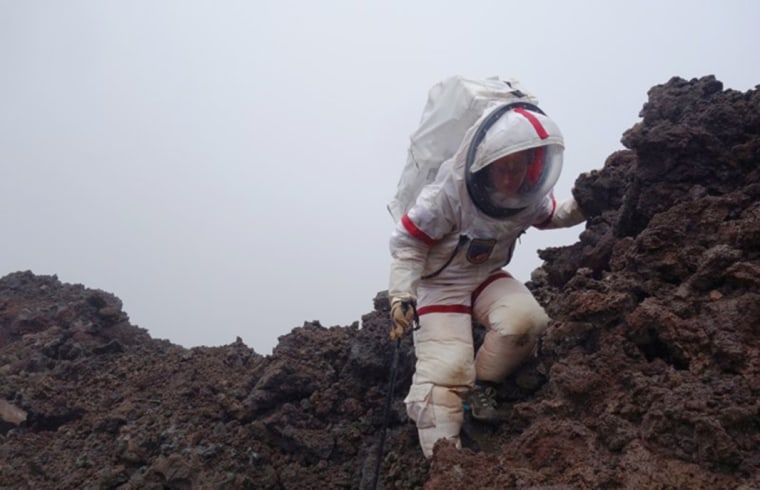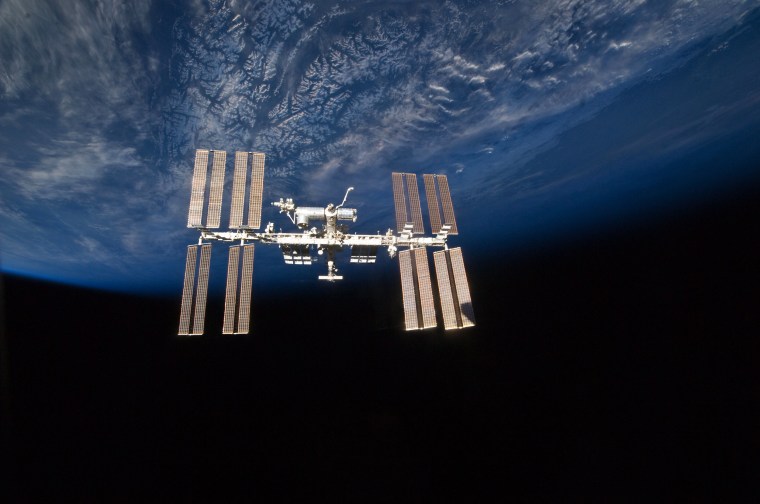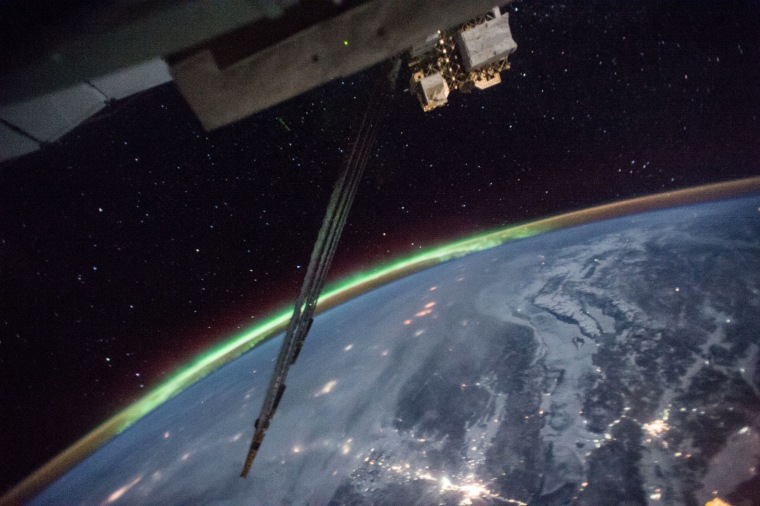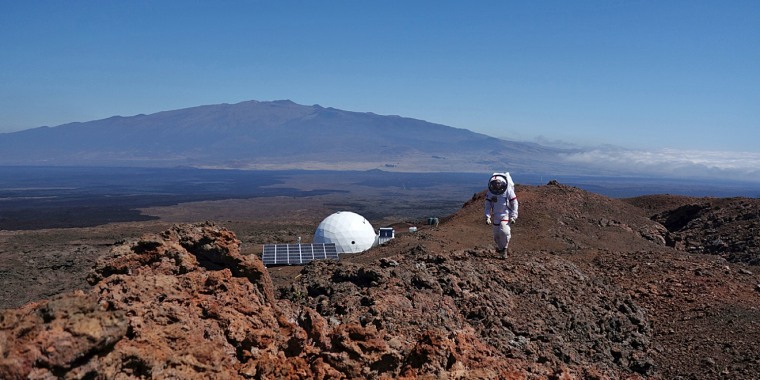You can probably imagine taking a month-long road trip across the U.S. with five other people in a Winnebago. It’d be a little cramped and you’d likely get on each other’s nerves, but at least you’d get to stop for breaks, eat at diners, jump in lakes, and maybe even take pictures at the Grand Canyon.
Now imagine driving in that packed van for six months straight. You can't stop at all to stretch or pick up roadside snacks. You can't open the window for fresh air. And every time you ask Waze for new directions, it takes 40 minutes to get a new map.
Related: Will Mars Colonists Evolve Into This New Kind of Human?
That’s similar to the journey the first astronauts who head to Mars will face. Living on the red planet presents its own myriad challenges, but just getting there will be a test of mental endurance unprecedented in the history of spaceflight.
As NASA aims to send a crew to Mars sometime in the 2030s, the space agency has a challenge on its hands: How can they keep astronauts mentally healthy and happy on such long journeys?
Stressors in Space
The International Space Station (ISS) has been continuously occupied by rotating crews for nearly 17 years, so NASA is well-equipped to deal with the everyday frustrations its astronauts might face on their routine six-month stints in low-Earth orbit.
“We are actually really good at countermeasures and support for the International Space Station,” says Kelley Slack, an industrial-organizational psychologist who is part of NASA’s Behavioral Health and Performance group that helps select and train astronauts.

Many of those current countermeasures involve keeping astronauts feeling connected to home. They can talk and video-chat with loved ones, mission controllers, and doctors in real-time. They can have media events and press conferences and throw virtual first pitches at baseball games. Resupply missions can bring love notes, fresh fruit, and Thanksgiving dinners from Earth.
Those luxuries won’t be available to astronauts bound for Mars, who will be disconnected from home and the life they knew in a way unprecedented in the history of spaceflight. They won’t be able to have a real-time conversation with anyone but their crewmates. With up to a 20-minute one-way lag in communications, they’ll have to wait 40 minutes to get a response to each message they send to Earth.

Add those stressors to the list of others astronauts are likely to experience — sleep disturbances, lack of privacy, lack of sensory stimulation, monotony, potentially life threatening situations, and the discomfort of being in microgravity — and you might have a recipe for tension.
Space agencies like NASA haven’t had to respond to behavioral emergencies during any missions so far, but the likelihood of astronauts developing behavioral problems or psychiatric disorders will increase as mission duration increases, according to a 2015 NASA report about managing health risks for spaceflight. So mission managers have to come up with a new set of strategies to prevent such problems during long trips.
The New Right Stuff
The pioneers who first set out for Mars will be vetted for qualities like psychological resilience, teamwork skills, self-awareness, and even a good sense of humor before they ever leave the planet. Like astronauts before them, they’ll have to have the ability to keep their emotional responses in control during high-stress, high-risk situations.
“Neil Armstrong demonstrated this characteristic as he piloted the lunar module for the first landing on the moon,” says Tom Williams, an element scientist in the Human Factors and Behavioral Performance group at NASA's Johnson Space Center in Houston. When billows of moon dust prevented him from seeing the lunar surface, Armstrong quickly adapted by looking for surface rocks through the haze. “He reported his heart was pounding but his mind stayed focused and confident from the hundreds of hours of flight stimulations he had experienced.”
But the famous stoicism of 20th-century astronauts would only go so far on long journeys in a small habitat. It will become even more important for future astronauts to have people skills like interpersonal tolerance, empathy, and a strong awareness of others’ needs.
“The crewmembers will need to be open to discussing psychological stressors with each other,” says Nick Kanas, a space psychology expert and an emeritus professor of psychiatry at the University of California, San Francisco. This will be especially important since astronauts won’t be able to have real-time conferences with mental health professionals on Earth.
Psychologists and behavioral researchers are already trying to anticipate the mental and social problems that might crop up by conducting analog missions that simulate the isolation of living in space.
Related: NASA's Bold Plan to Save Earth From Killer Asteroids
At HI-SEAS missions in Hawaii, astronaut stand-ins live in a Mars-like habitat, cut off from the rest of the world, for up to a year at a time. Their interactions, performance, and stress levels are closely monitored through surveillance cameras, surveys, diaries, and even badges that track their locations. There, scientists have also reported success in testing systems like the Virtual Space Station — a computer program that can walk astronauts through training on conflict and stress management or depression treatment programs.
During another analog mission in Russia, scientists studied the psychological and behavioral changes of a crew that spent 520 days simulating a mission to Mars. Interestingly, the crew reported five times as many conflicts with mission control as they did among themselves. This perhaps highlights how communication lags can put a strain on relationships, and how crews and mission controllers will need to develop a good rapport before the start of the journey.
Give Me Some Space
Elon Musk is still a long way from introducing SpaceX’s roomy 100-person spaceship complete with movie theaters and restaurants to keep people occupied on a mission to Mars. NASA plans to send its first astronauts to Mars in an Orion capsule and an attached habitat. Though the exact configuration of that craft has yet to be determined, it will be quite small compared to other crafts.
One NASA report calculated that the minimum amount of habitable space needed for a Mars mission is 883 cubic feet per astronaut — compare that to the 3,008 cubic feet of habitable space per astronaut on the ISS, which is so roomy that astronauts could go a whole day without seeing their colleagues.
The small size not only means less privacy, but also less room to perform essential tasks that have benefits for mental and physical health, such as working out. On the ISS, astronauts currently have a variety of options — special treadmills, exercise bikes, and resistance machines — to complete the two hours of exercise they need to maintain bone density and muscle strength in a microgravity environment. But if you’ve ever seen videos of astronauts struggling out of a Soyuz capsule, you know it’s still not easy readjusting to Earth’s gravity. Astronauts who land on Mars, which has a third of Earth’s gravity, won’t have any terrestrial crews to help them.
In addition to strength, exercise can provide sensory stimulation, which is another important relief from the pressures of living in space. Other outlets on future missions might include growing plants in hydroponic gardens — a restorative activity (as any recreational gardener knows) as well as a source of nutrition that is already being tested on the ISS. But researchers are also exploring virtual escapes from the restricted conditions and isolation of spaceflight.
NASA has funded scientist Peggy Wu of the research company SIFT to study how VR could provide psychological support for astronauts on deep space missions. SIFT’s program — which is called ANSIBLE — contains virtual worlds on which astronauts could visit art galleries, nature preserves, and environments similar to home, or interact with avatars of their friends.
Last year, NASA also funded research into a version of suspended animation — the ultimate distraction from a tedious flight. SpaceWorks, the company that proposed the idea, wants to put astronauts in a state of advanced hypothermia to allow them to hibernate during their Mars journey.
Entering Unknown Territory
Missions like HI-SEAS and Mars500 can only go so far in mimicking the real conditions of space, so there will be some uncertainty in the first Mars missions.
Williams says a significant question is how deep space radiation may impact the human body, especially the central nervous system, in ways that could have psychological and behavioral effects.

Another big unknown for long-distance space exploration is how the “Earth out of view” phenomenon is going to affect astronauts. The No. 1 leisure activity on the ISS is looking at and photographing Earth. It’s not clear if virtual windows simulating a view of Earth or the new view of the red planet's canyons, deserts, and mountains will have the same effect.
“It will be first time that we’ve been totally disconnected from Earth,” Slack says. “There’s no good way of studying that.”
In some respects, the people we send to Mars might be more like Lewis and Clark than 20th-century astronauts, Slack says. “They’ll be going out and they’ll have a concept of what’s going to happen, but there’s a great degree of uncertainty.”
